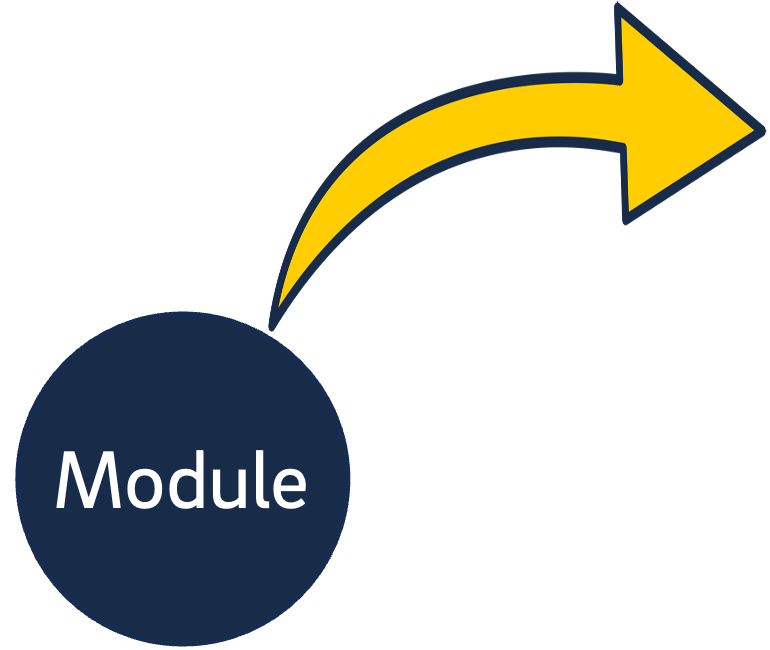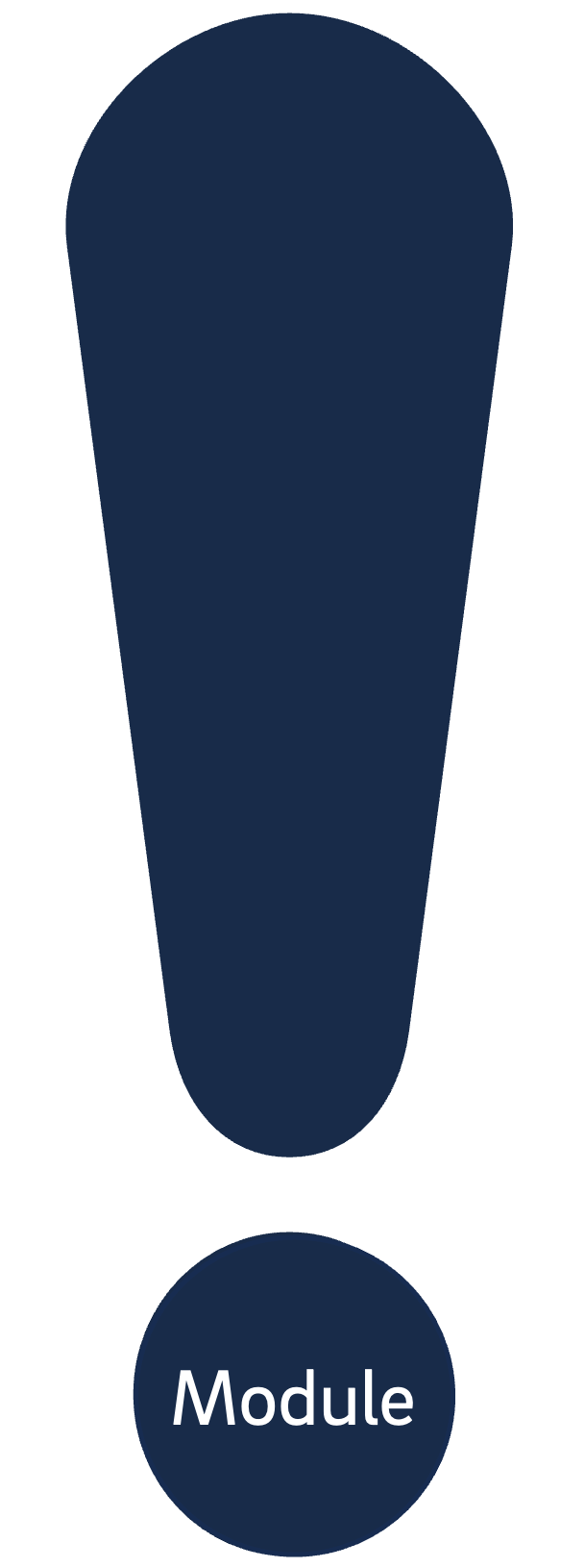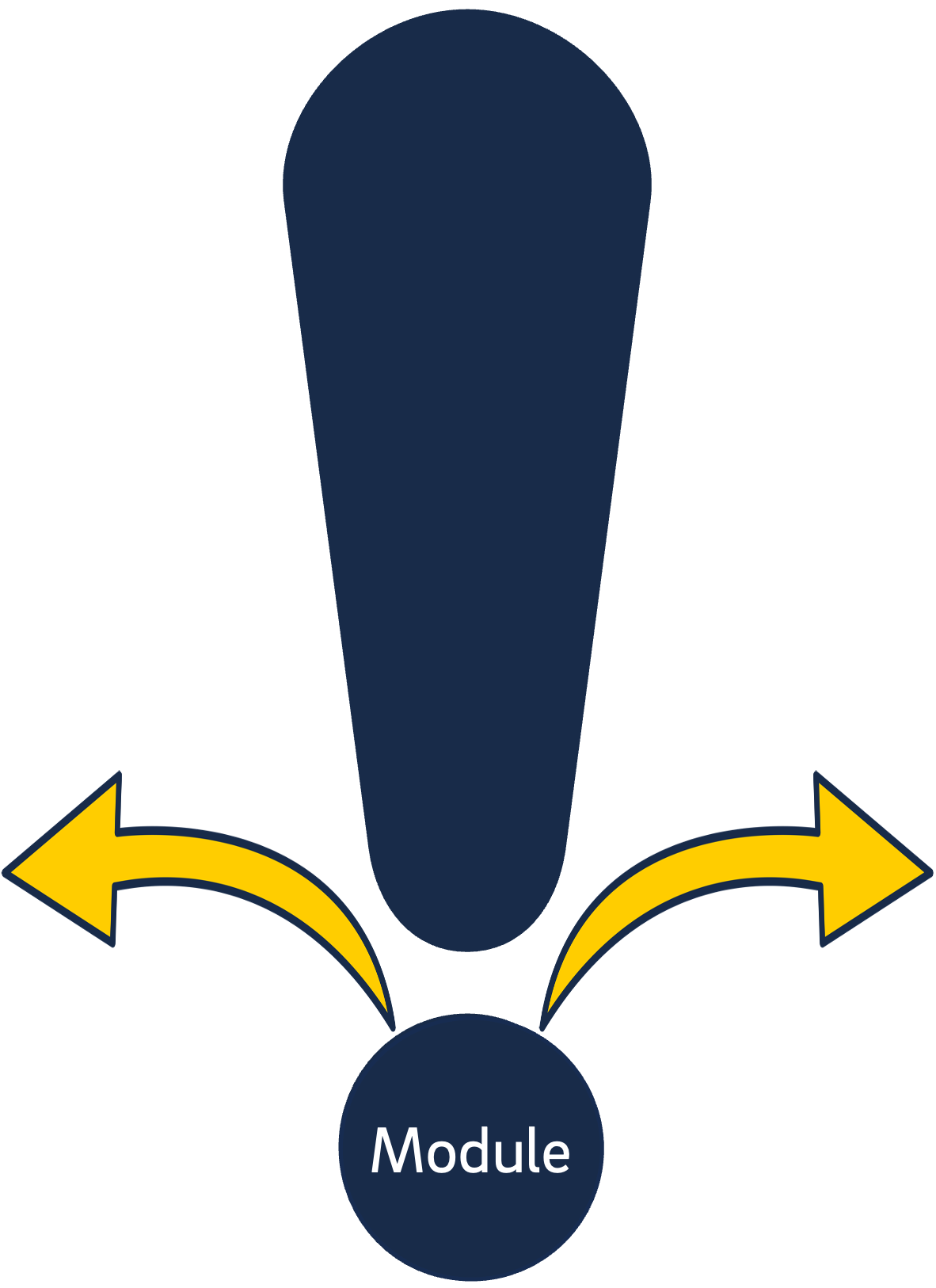Why You Should Make Module Introduction Videos
Module introductions provide much-needed context that helps students understand the larger course narrative. Delivering them via video provides valuable opportunities for creativity and instructor presence.
The Short Version
Module introductions offer invaluable opportunities for instructors to provide context: an often-overlooked characteristic of learning that enhances student motivation and helps them build meaningful connections among your course materials. They can be particularly effective as videos, since they can enhance instructor presence, leverage social cues, and offer opportunities for creativity.
Your module introductions should review, preview, and motivate.
The principle of backwards design guides most course development efforts: begin at the end and work your way backwards. That is, you consider where you want students to end up (the learning objectives), then consider how you're going to evaluate their progress towards those goals (the assessments), and lastly identify what will prepare them for those evaluations (the instructional materials).

Though learning objectives are arguably the most important components of any course, the most time and energy during course design is often devoted to the selection or creation of instructional materials. What's often missing in course design, however, is the context of the course elements you select.
When looking at a syllabus or a course's modules, students can often see these simply as a checklist - just things to complete in order to finish the course or achieve a good grade. Students benefit enormously from understanding why you've selected these materials, how they help them achieve the course's objectives, and how they fit into a broader course narrative. This "connective tissue" between your course materials can serve to motivate students, enhance your presence, and provide students a meaningful framework for the complex knowledge schemata they'll need to construct.
So what makes for a good module introduction? Well, one that reviews, previews, and motivates.
- Review what your students have already learned
- Preview the material they're going to encounter in this module
- Motivate them to consume it
Expert Blind Spot
One of the difficulties instructors encounter is understanding their students' perspectives. Within their area of expertise, instructors, as experts, can quickly recognize patterns and understand how they fit into a broader picture, whereas students, as novices, may not. When experts encounter new information, they know where it belongs within a larger schema, and unconsciously chunk and organize the information on their own. If they need to recall information, they can do so with relative ease. Novices, on the other hand, may only see isolated fragments of the overall schemata, and without a meaningful framework to put them into, they may encounter difficulty understanding, chunking, or recalling (Ambrose et al, 2010).
In short, then, expert blind spot refers to when instructors either ignore or are unaware of students' difficulty incorporating new information.
Try this as a thought experiment when you're with a friend: tap out the rhythm of the song "Happy Birthday" on a table and ask your friend if they recognize the song you're tapping. Don't hum or give any other clues. Chances are they'll have no idea what song you're tapping. But it sounds so obvious to you! That's a simplified representation of expert blind spot.
With this in mind, the choice of instructional materials in your course may be entirely obvious to you, or maybe you assume it's part of what the students are meant to discover on their own. But explicitly discussing why you selected your course materials and identifying how they connect to one another can help you overcome your expert blind spot and help prepare students for the skills and knowledge they'll need to learn.
How to Approach Your Module Introduction
Consider this mnemonic device when considering how to develop the content of your module introduction: review, preview, motivate.
Review
How does what students have already learned build to this point?
 Explain in your module introduction where the students are at this point in the course. Address what they've already learned and identify concepts that are particularly relevant to the current module. This is what's referred to as activating prior knowledge. In their seminal work How Learning Works, the authors discuss the strong role that prior knowledge can play in learning, for good or for ill. And given how effective learning is when you scaffold knowledge and skills, it's essential that students have an accurate "scaffold" beneath them. Your module introduction should serve to reinforce that the existing foundation underpinning students' learning is built to spec, as it were. Research indicates that even token efforts to activate students' prior knowledge can have a positive effect on learning (Ambrose et al., 2010).
Explain in your module introduction where the students are at this point in the course. Address what they've already learned and identify concepts that are particularly relevant to the current module. This is what's referred to as activating prior knowledge. In their seminal work How Learning Works, the authors discuss the strong role that prior knowledge can play in learning, for good or for ill. And given how effective learning is when you scaffold knowledge and skills, it's essential that students have an accurate "scaffold" beneath them. Your module introduction should serve to reinforce that the existing foundation underpinning students' learning is built to spec, as it were. Research indicates that even token efforts to activate students' prior knowledge can have a positive effect on learning (Ambrose et al., 2010).
So do your best to start weaving the narrative of your course by discussing what's come before.
Preview
What are students going to learn in this module, and what guidance can you provide them?
 It may be obvious, but your module introduction should also give your students an idea of what they're about to encounter - what kinds of materials they need to consume, the assessments they'll take, or the skills or knowledge that they'll acquire.
It may be obvious, but your module introduction should also give your students an idea of what they're about to encounter - what kinds of materials they need to consume, the assessments they'll take, or the skills or knowledge that they'll acquire.
It's important to go beyond just listing what the students will need to complete, however. Offer guidance on how to approach the materials and how they're related to one another. Consider whether there are overarching themes or common arguments. Identify specific sections of readings or potential distractions of which students should be aware. Help students navigate through the materials in a way that will help them understand why you've selected them.
Having an opportunity to explain the context of the module's materials may help you address your own expert blind spot. In addition, research indicates that providing an organizational framework (or "advance organizer") enhances students' comprehension and retention (Ambrose et al., 2010). So give them an idea of what's to come and how to navigate it.
Motivate
Why should students care about the material and activities you've selected for this module?
 The last - and arguably most important - thing your module introduction should do is motivate your students to consume the material. Explain why and how the material is relevant to course goals, how it relates to a real world context, or how future material in the course builds on it. Students' motivation is heavily influenced by the value that they assign to the course and its content, and explicitly articulating that value is key to promoting engagement and retention.
The last - and arguably most important - thing your module introduction should do is motivate your students to consume the material. Explain why and how the material is relevant to course goals, how it relates to a real world context, or how future material in the course builds on it. Students' motivation is heavily influenced by the value that they assign to the course and its content, and explicitly articulating that value is key to promoting engagement and retention.
One way to consider addressing motivation in your module introduction is to create a "hook." Begin with a demonstration of a real-world process, a discussion of a common misconception, a discussion of a relatively current event, or an observation of a phenomenon that relates to the upcoming material. This piques students' interest and can enhance their motivation to consume and engage with the material more deeply.
Motivation is absolutely essential for your students' success. If they're not motivated to consume the material, participate, and devote cognitive effort to learning the material, they may perform much poorer than they could otherwise. So when filming your module introduction, be sure to inject some enthusiasm and excitement when appropriate. It may encourage your students to engage more.
 Though this article focuses on the value of providing context on a modular level, providing this on every level of your course - from individual pieces of instructional material to the course as a whole - is extremely helpful to your students. Course overview videos, specific guidance for individual reading assignments, or even announcements during the week are all valuable opportunities to add context.
Though this article focuses on the value of providing context on a modular level, providing this on every level of your course - from individual pieces of instructional material to the course as a whole - is extremely helpful to your students. Course overview videos, specific guidance for individual reading assignments, or even announcements during the week are all valuable opportunities to add context.
Providing context through module introductions and elsewhere will help you weave a course narrative that will help students create a mental framework on which to scaffold new knowledge schemata. Videos offer an opportunity to communicate this context in creative ways and to use social cues (enthusiasm, eye contact, etc.) to promote engagement and foster a sense of community. By appropriately chunking material and addressing expert blind spots, the context provided encourages students to take a metacognitive perspective, empowering them to take ownership of their learning. While delivering the appropriate level of context demands time and effort, the positive impact on your students makes it worthwhile.
The great thing about module introduction videos is that they can be short, be delivered extemporaneously if desired, and be an opportunity to communicate your passion for the material. They're also a gentle introduction to the world of video production, particularly if you're new to creating course videos.
References
Ambrose, Susan A., Bridges, Michael W., DiPietro, Michele, Lovett, Marsha C., & Norman, Marie K. (2010). How learning works: 7 research-based principles for smart teaching. San Francisco, CA: Jossey-Bass.
Have additional questions about video? Contact Multimedia Services at multimedia@ucsd.edu.